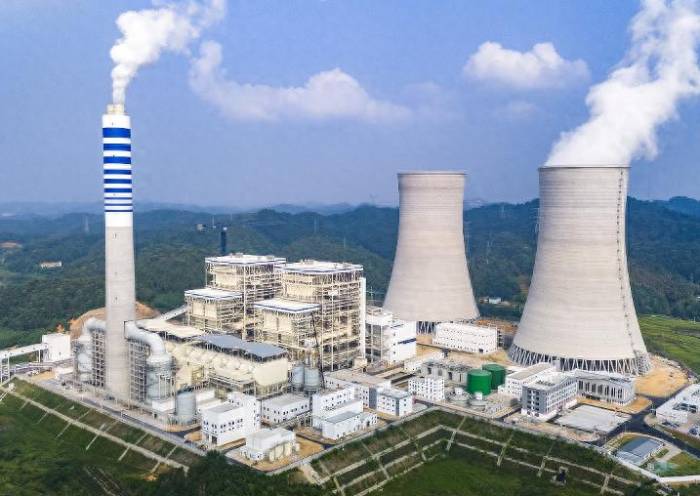Coal Power's Low-Carbon Shift: External Aid & Internal Upgrades
In the context of China’s ambitious “dual carbon” targets, the low-carbon transformation of coal-fired power generation has emerged as a pressing challenge that demands urgent attention. Recently, the Tianjin Panshan Power Plant, managed by the State Energy Group, has gained notable attention for its renovation project aimed at extending the lifespan of its facilities. This major upgrade has transformed two outdated Russian-made supercritical units into state-of-the-art domestic ultra-supercritical units. Remarkably, this renovation not only extends the operational life of the units by an impressive 30 years but also significantly reduces coal consumption during electricity generation, while enhancing thermal capacity. This strategic move illustrates that modernizing existing coal power facilities can be more economically efficient than constructing new units, marking a novel approach to advancing low-carbon development in China's coal power sector, and unveiling the vast potential for green development within this industry.
Coal power remains a cornerstone of China's energy supply, a status that is unlikely to change in the short term. Although installed capacity for renewable energy has surpassed that of coal, coal still plays an irreplaceable role in meeting generation needs, supporting peak load in the power grid, and fulfilling heating obligations. However, this dependence on coal also positions it as a primary source of carbon emissions in the country. To achieve carbon neutrality and ensure energy security, it is critical for China to invest significantly in innovative technologies and tackle the substantial challenges posed by transforming coal-fired power generation.
Advertisement
The action plan to achieve low-carbon transformation of coal plants outlines three primary pathways. The first two pathways involve co-firing biomass and green ammonia; this transition facilitates the shift from relying solely on coal — the traditional “staple food” — to incorporating renewable fuels to optimize the fuel mix. The third pathway focuses on Carbon Capture, Utilization, and Storage (CCUS) technologies, which aim to capture the carbon dioxide emissions produced from coal combustion and either industrially repurpose them or sequester them underground. Each of these approaches capitalizes on resources beyond coal to promote this transformation.
However, in the medium and long term, these three pathways present substantial challenges. While they represent the main strategies for deeply decarbonizing China's coal generation, many of these external technologies still have significant limitations that hinder widespread implementation at the present stage.
Co-firing biomass necessitates a substantial supply of biomass fuels such as agricultural residues. However, current resources in China, especially agricultural straw, are limited and cannot support the extensive co-firing needs of coal plants. Even with strategies aimed at cultivating super-energy plants to enhance biomass fuel availability, establishing a complete industrial chain will require considerable time and investment. For the immediate future, the strong demand for biomass co-firing in thermal power generation is likely to lead to a supply-and-demand imbalance, where supply falls short of the rising demand. In addition, the relatively high price of biomass fuels presents a cost burden for energy-intensive power plants.
On the other hand, blending green ammonia faces challenges, including high prices, safety in transportation, and limited quantities. In many regions of China, green ammonia struggles to compete with biomass fuels. In the northwest regions—home to deserts and arid landscapes—where renewable energy resources are abundant but biomass is scarce, green ammonia co-firing becomes somewhat viable, albeit requiring thorough economic analysis and risk assessments throughout its entire process.
Moreover, CCUS technology is fraught with difficulties. Generally, deploying CCUS can increase energy consumption by 20% or more, and sequestering emissions may cost more than that of coal itself. The sheer volume of CO2 emissions from coal used in power generation annually raises the daunting challenge of capturing and storing these emissions underground. Additionally, the national consumption of CO2 in industrial and residential sectors remains minimal compared to the overall coal-fired emissions, rendering current utilization efforts grossly inadequate.

Confronted with the limitations of external low-carbon routes, the coal power industry needs to explore internal efficiencies, achieving low-carbon development through internal enhancements. Practical experience shows that by significantly improving operational efficiencies and implementing deep load-shifting strategies, coal-fired units can substantially reduce coal consumption per unit, thereby decreasing carbon emissions and costs while increasing profits from flexible operations. This success lays a solid groundwork for the future widespread adoption of renewable fuels and CCUS technologies.
Taking the Panshan Power Plant as a case study, their life-extension upgrades have led to a 14% decrease in coal consumption while more than doubling their heating capabilities, integrating economic, social, and environmental benefits into their operational model. In another example, the Huaneng Xuzhou Power Plant has revamped its subcritical units to achieve super-supercritical efficiency levels while enhancing its capabilities for sustained deep load-shifting.
In recent years, China has placed tremendous emphasis on clean and efficient utilization of coal, especially in energy-saving renovations within coal plants. The nationwide average coal consumption for power generation has demonstrated a consistent downward trend. From a technological viewpoint, there remains significant potential for internal upgrades to further reduce coal consumption in coal-fired units. Subcritical units, which make up about one-third of the total installed capacity of coal power, stand out as targets for upgrades, as improving their efficiency dramatically could alleviate the pressures associated with low-carbon transitions in the coal sector.
The low-carbon transformation of coal-fired power generation stands as a pivotal initiative in realizing China's dual carbon goals. To effectively renovate existing coal power facilities, there is a pressing need for ongoing technological innovation and iterative upgrades aimed at achieving more ambitious energy-saving targets. Regulatory bodies can support this momentum through the establishment of pertinent policies and standards, along with financial assistance and tax incentives, encouraging coal enterprises to reach new heights in energy savings. Building upon internal efficiencies, a strategic and orderly approach to external supplementation is essential in achieving deep decarbonization of coal power generation.
Leave a comment
Your email address will not be published. Required fields are marked *